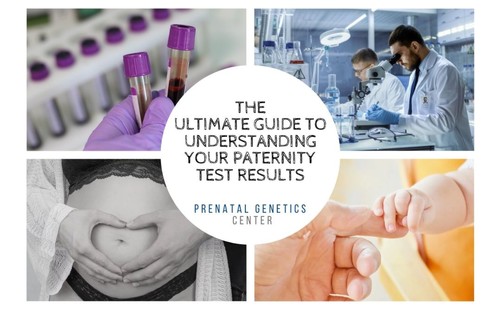
For those that are considering or have undergone a DNA test while pregnant to determine the biological father of their child, it can feel like a maze to navigate through the meaning behind your results, as conclusive as they may be.
For others, it can put their doubts at rest just to have a well-rounded understanding of the scientific literature as to how their results came to be.
Whatever the case, a DNA test while pregnant provides you with more than a simple ‘yes’ or ‘no’ answer. The more common results of ‘inclusion’ and ‘exclusion’ are used, let’s help clarify what these mean:
Combined Paternity Index (CPI)
For starters, let’s clear the air as to what the purpose of the CPI is. This odds ratio gives a quantitative indication as to the likelihood that the father in question is the biological father, as opposed to a random member of the population that happens to share similar ethnic relations.
With regards to elucidating on this value, a simple method to interpret this is by associating the number with the likelihood of paternity, i.e. the greater the number, the greater the chance of being the biological father. A father that does not pose a chance of being biologically related will have a value of ‘0’.
CPI also ties into a measure known as ‘probability of paternity’, both values of which should be available on your report. This is important to keep in mind as it factors into the result the testing facility lands on.
What is Paternity Inclusion?
A paternity inclusion will be reported should a probability of paternity ≥99% be calculated in addition to matching with all tested genetic markers.
Should the data and statistical analysis align to these goalposts, your report will conclude something along the lines that the father in question ‘is not excluded as the biological father’.
Wording like this can understandably lead to a lot of head-scratching behind its meaning. Worry not, this phrasing is essentially conveying the message that the father in question, with all the data at hand, is the biological father.
Paternity inclusion can only be reported should any of the following two situations be met:
- ≥99% probability of paternity + ≥100 CPI (claimed father and child only)
- ≥99% probability of paternity + ≥500 CPI (claimed father, mother, and child)
What is Paternity Exclusion?
This will be reported should a 0.00% probability of paternity be calculated and is based off ≥2 genetic markers being a non-match.
Should your report conclude with verbiage along the lines that the father in question ‘is excluded as the biological father’, this can be distilled to mean that the claimed father is not the biological father of the child, as the amassed data does not fall in line with possible paternity.
A Stress Free DNA Test While Pregnant
Paternity testing can be emotionally taxing, your testing facility needn’t pile onto this stress. That’s why many expectant mothers choose to conduct their DNA test while pregnant with Prenatal Genetics Center; we take a simple approach for turnaround, safety, and accuracy.
Our non-invasive prenatal paternity test offers no health risk towards you or your baby with an accuracy of 99% for both paternity inclusion and exclusion, all after only your 10th week of pregnancy. Convenience like this doesn’t come at a premium either - typical cases show that our testing costs you approximately 82% less compared to invasive solutions. Don’t hesitate to reach out if you need assistance for any queries relating to your DNA test while pregnant!



